LaTeX templates — Direct Submission Link
Recent
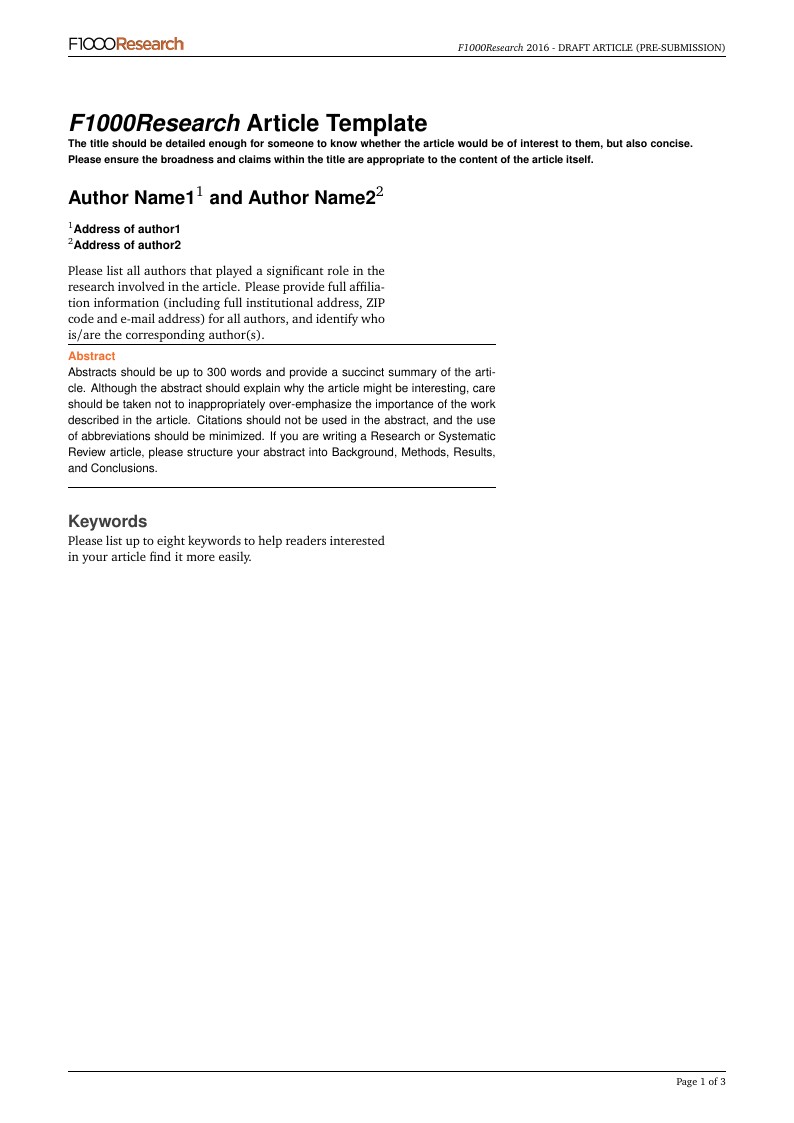
This template has been created for authors submitting articles to F1000Research. It is designed for easy editing online with Overleaf. Simply click above to start writing online in your browser. For instructions about the different article types accepted, please see F1000Research's article guidelines, and if you're new to Overleaf check out our tutorial for some help getting started.
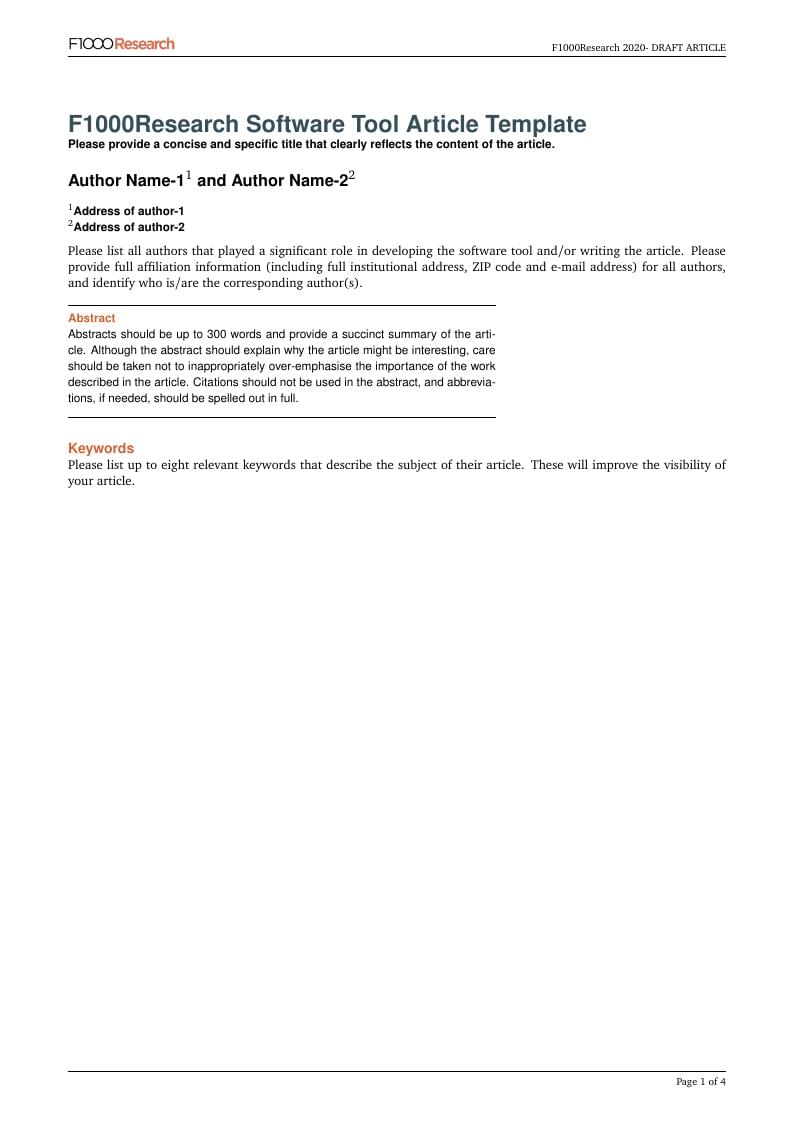
This template has been created for authors submitting Software Tool Articles to F1000Research. It is designed for easy editing online with Overleaf. Simply click above to start writing online in your browser. For more information about submitting Software Tool Articles to F1000Research, please see their article guidelines. F1000Research advocates an Open Data policy. All articles should include citations to repositories that host the data underlying the results, together with details of any software used. When presenting new software tools all source code must be made openly available and archived in an online repository. For detailed guidelines on where the data/software can be deposited, and how they should be presented, see our data guidelines.
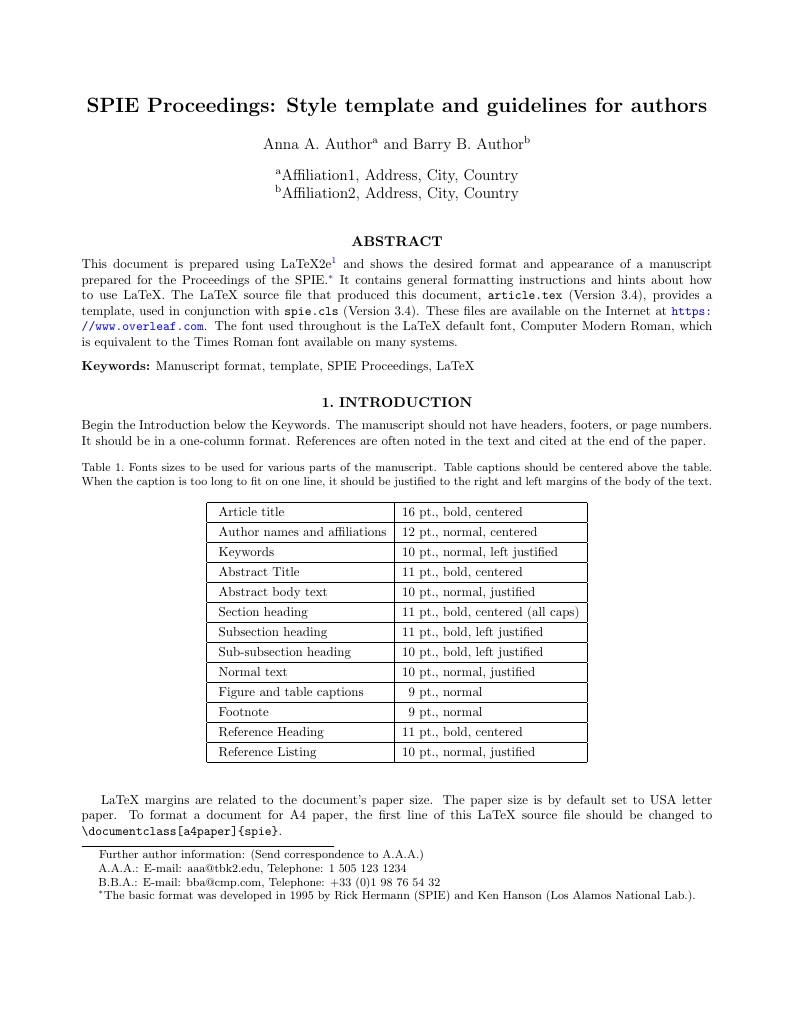
This template is for authors submitting a manuscript to SPIE Proceedings based on an oral or poster presentation at an SPIE conference. The Overleaf template allows authors to write, edit, and collaborate online. Authors can then submit the paper to SPIE Proceedings by downloading the PDF and source files generated from Overleaf. Detailed information about submitting a manuscript to SPIE Proceedings can be found at http://spie.org/x14105.xml. If you're new to Overleaf and LaTeX, check out our free introductory course for help getting started.
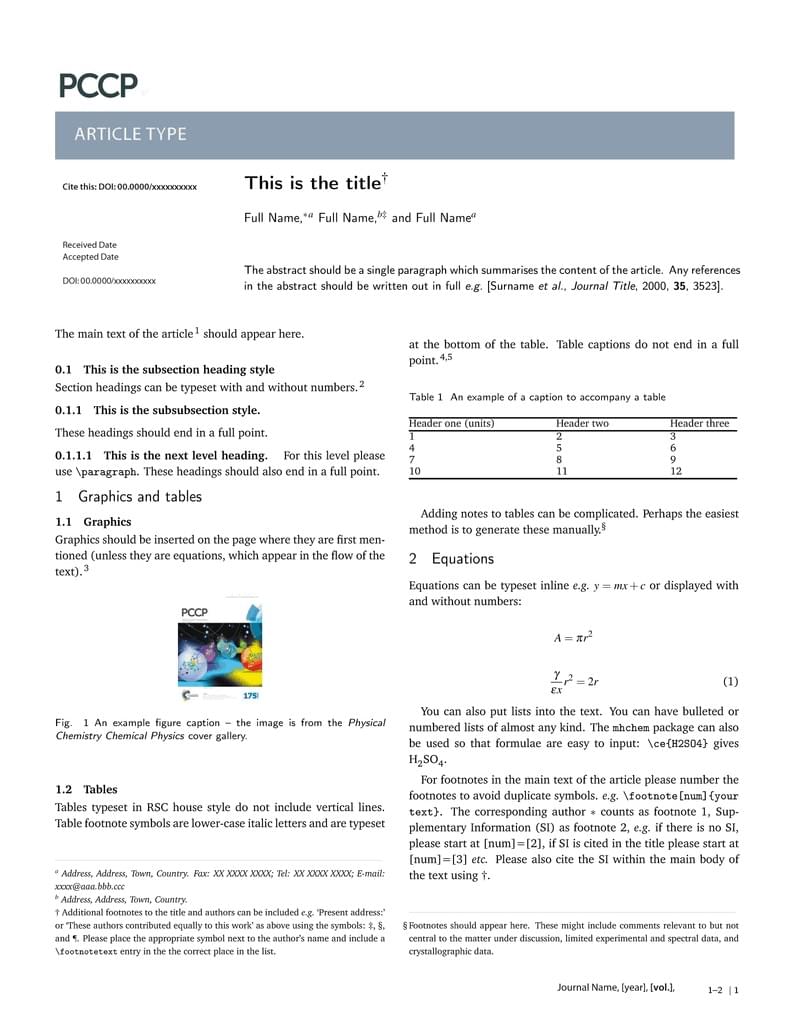
This template for the preparation of LaTeX submissions to PCCP (Physical Chemistry Chemical Physics) includes a direct link to the journal for easy submission of your finished article. To begin writing your article, simply click the 'Open as Template' button above. When your article is complete, simply click the 'Submit to Journal' link from within Overleaf to submit your files to PCCP. Your files will be transferred automatically in one easy step, without the need for you to download and re-upload any files, and you'll be taken directly to the PCCP submission site to complete your submission. If you're new to Overleaf, we've provided a short tutorial video to help you get started. This template uses the main LaTeX ARTICLE template for RSC journals. Copyright The Royal Society of Chemistry 2019. Use of the Overleaf platform and associated services (including the PCCP Template) is subject to the Overleaf terms of service.
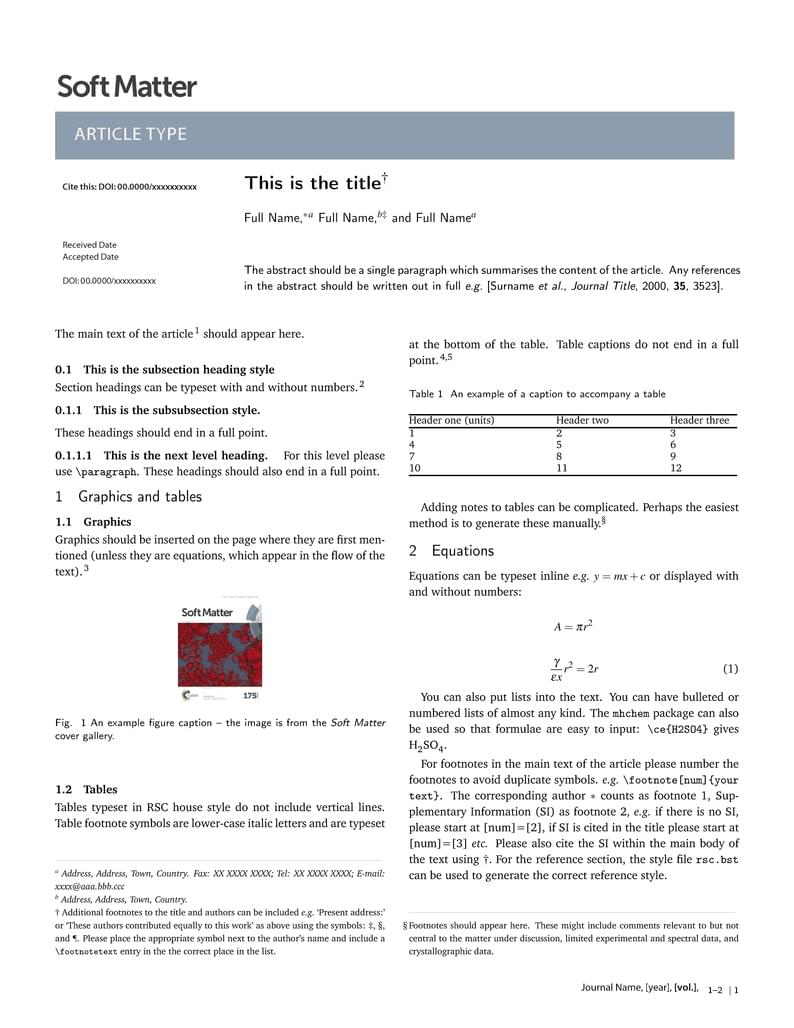
This template for the preparation of LaTeX submissions to Soft Matter includes a direct link to the journal for easy submission of your finished article. To begin writing your article, simply click the 'Open as Template' button above. When your article is complete, simply click the 'Submit to Journal' link from within Overleaf to submit your files to Soft Matter. If you're new to Overleaf, we've provided a short tutorial video to help you get started. This template uses the main LaTeX ARTICLE template for RSC journals. Copyright The Royal Society of Chemistry 2019. Use of the Overleaf platform and associated services (including the Soft Matter Template) is subject to the Overleaf terms of service.
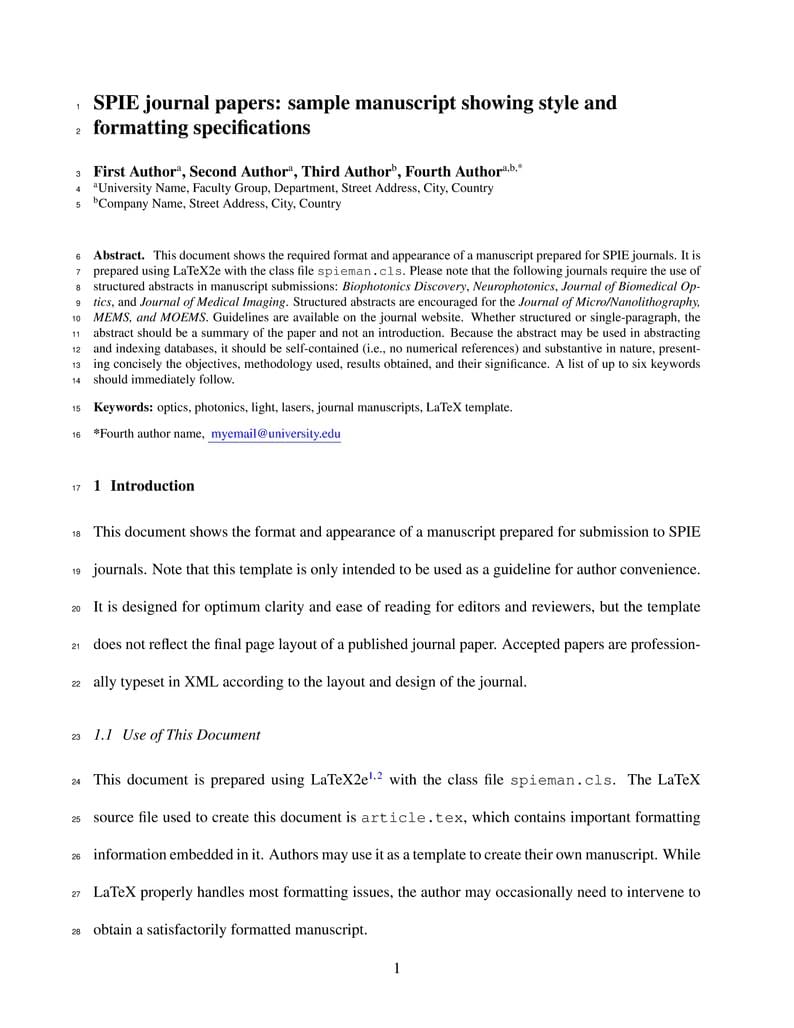
This template is for authors submitting a manuscript to an SPIE journal. The Overleaf template allows journal authors to write, edit, and collaborate online. Authors can then submit the paper to an SPIE journal by downloading the PDF and source files generated from Overleaf. Detailed author guidelines for SPIE journals can be found at http://spie.org/AuthorGuidelines.
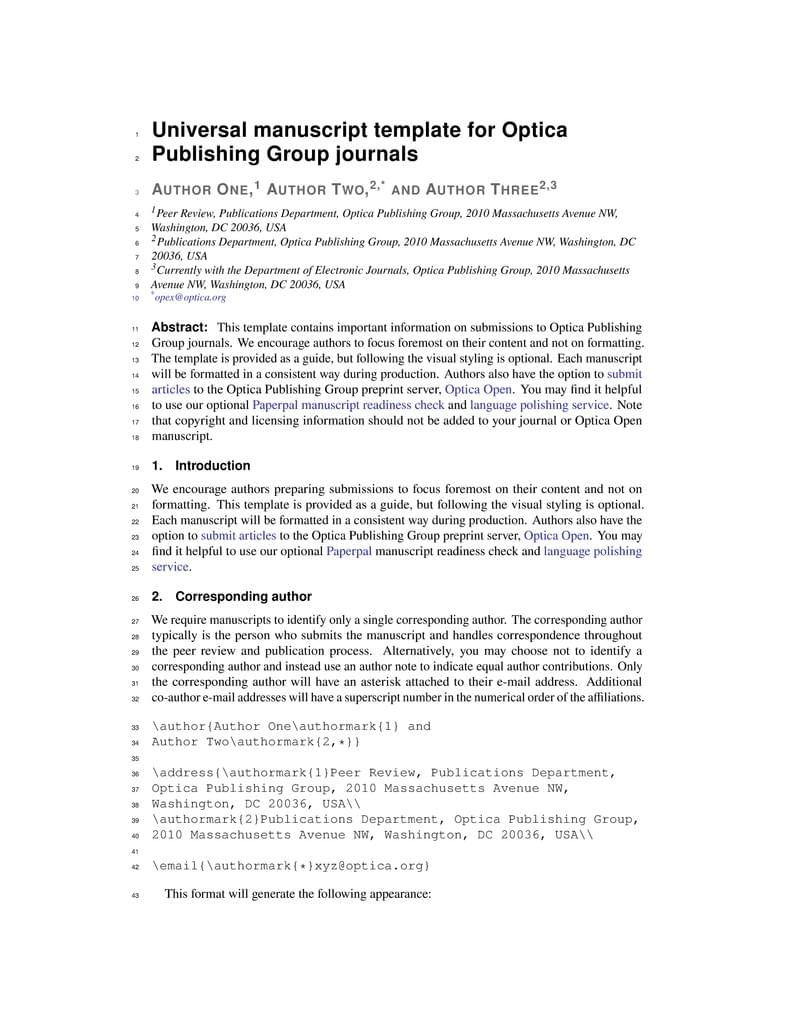
LaTeX manuscripts submitted to Optica Publishing Group journals may use these instructions and this universal template format. The template simplifies manuscript preparation and eases transfer between Optica journals. Applied Optics, Journal of Optical Communications and Networking, JOSA A, JOSA B, Optics Letters, Optica and Photonics Research authors may also use the previous, legacy templates, particularly if a precise length estimate is needed. Authors will still need to adhere to article-length restrictions based on the final, published format. Once your article is complete, you may submit it directly to Prism (Optica's article tracking system) via the 'Submit to Optica' option in the Overleaf editor.
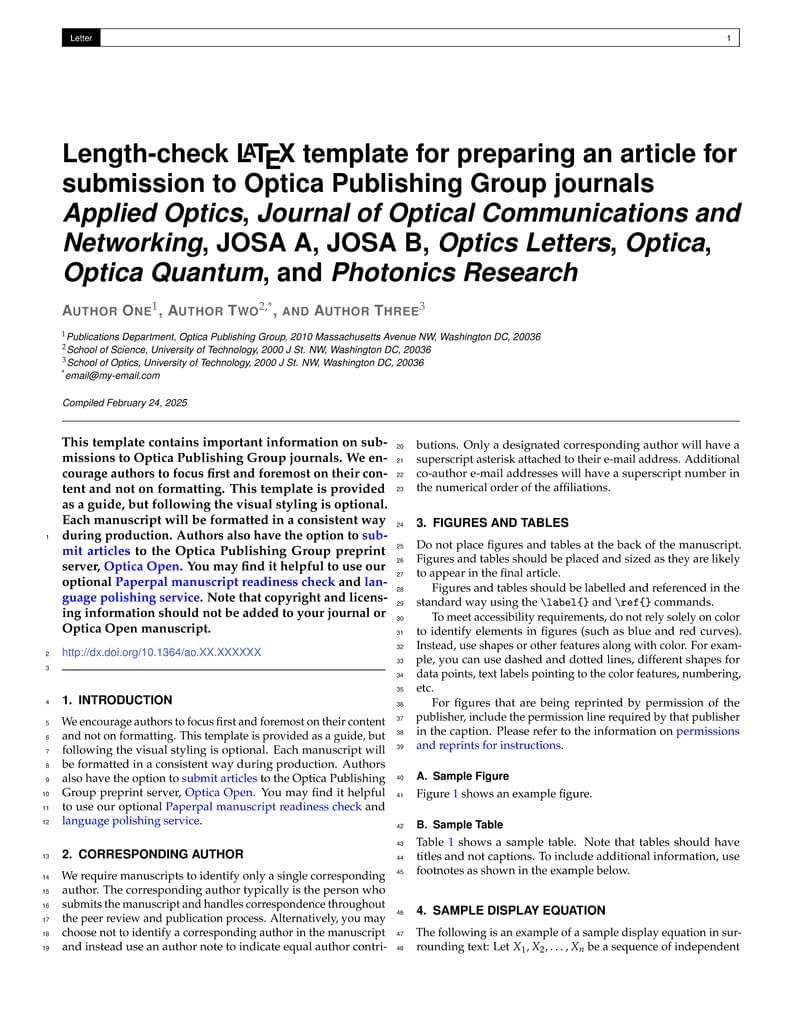
This template can be used to approximate final page count for submission to Optica Publishing Group’s journals Applied Optics, Journal of Optical Communications and Networking, JOSA A, JOSA B, Optics Letters, Optica, and Photonics Research. Use the shortarticle/true option for Optics Letters and short Optica articles. Note that this template can be run from your own TeX system or within the cloud-based Overleaf system. When compiling on your own TeX system, you may need to run bibtex fullrefs additionally to generate the full reference list for certain journal submission types. Once your article is complete, you may submit it directly to Prism (Optica's article tracking system) via the 'Submit to Optica' option in the Overleaf editor. opticajnl.cls v1.0, 2022/06/13: OSA renamed to Optica Publishing Group.
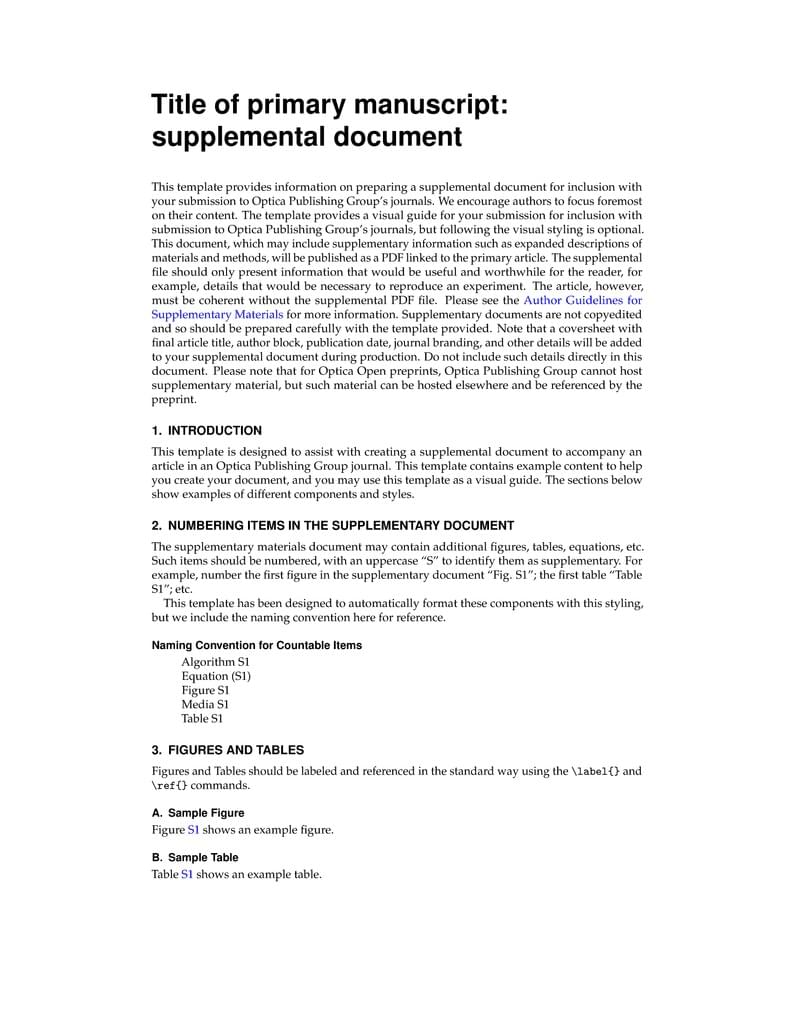
This LaTeX template can be used to prepare a supplementary document for inclusion with submission to Optica Publishing Group's journals. This document, which may include supplementary information such as expanded descriptions of materials and methods, will be published as a PDF linked to the primary article. The supplemental file should only present information that would be useful and worthwhile for the reader, for example, details that would be necessary to reproduce an experiment. The article, however, must be coherent without the supplemental PDF file. Please see the Author Guidelines for Supplementary Materials for more information. Supplementary documents are not copyedited and so should be prepared carefully with the template provided. Note that a coversheet with final article title, author block, publication date, journal branding, and other details will be added to your supplemental document during production. Do not include such details directly in this document.. Note that this template can be run from your own TeX system or within the cloud-based Overleaf system.
\begin
Discover why over 20 million people worldwide trust Overleaf with their work.